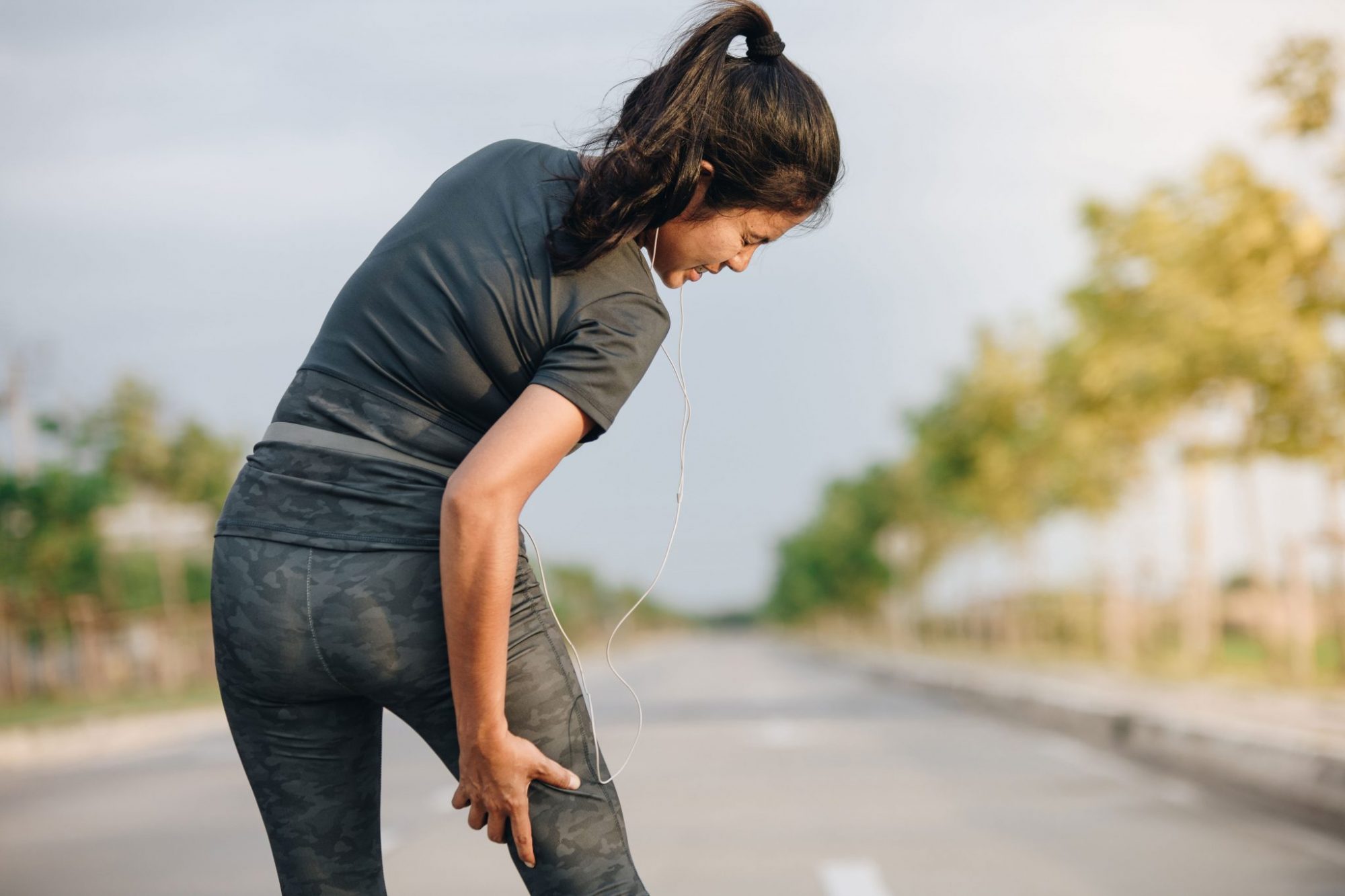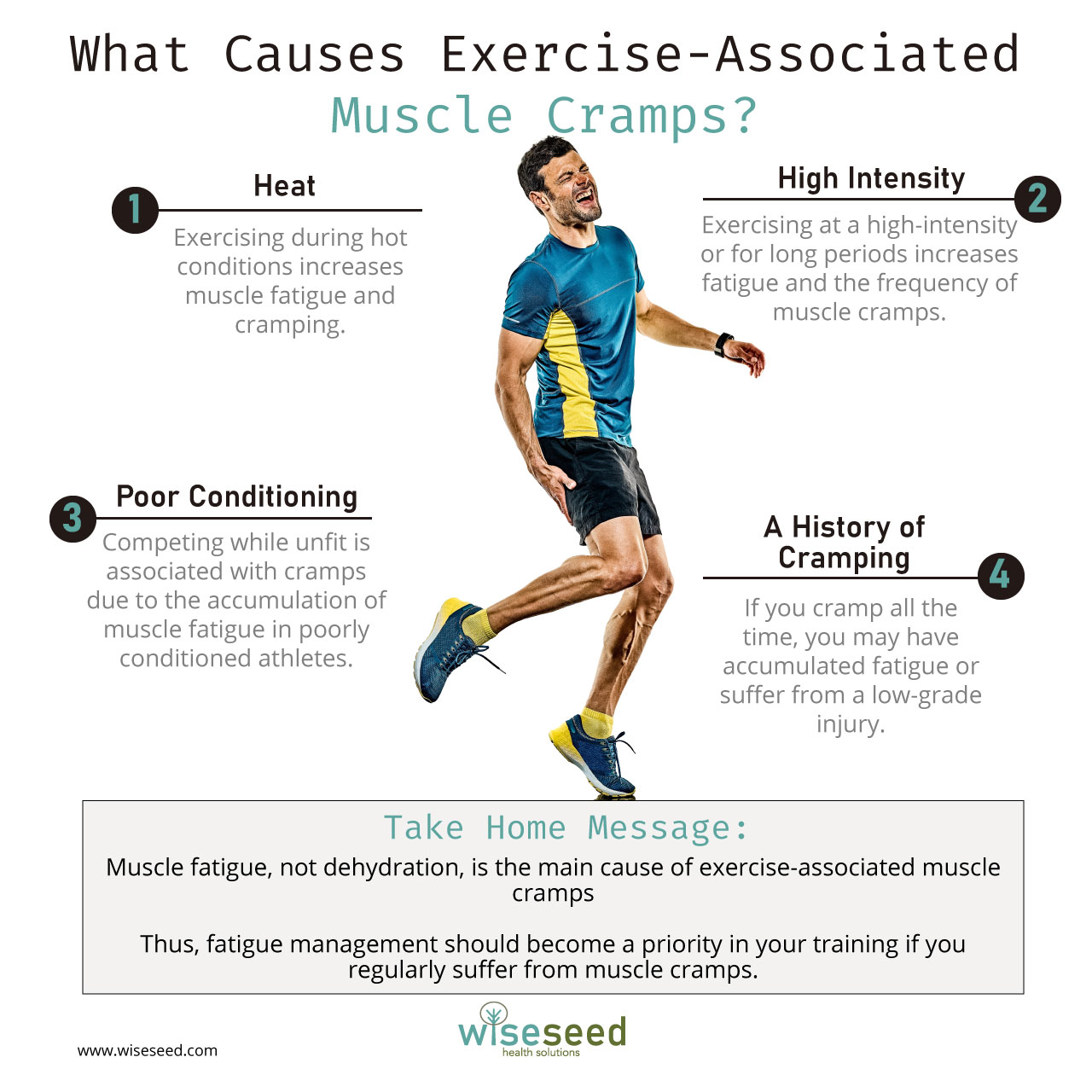What Causes Exercise-Associated Muscle Cramps?

‘The pain passes, but the beauty remains.’
Auguste Renoir
Introduction
Summer is here, and the heat and humidity are through the roof. Unfortunately, heat and humidity make training extremely uncomfortable. Worse, the summer heat increases the incidence of exercise-associated muscle cramps (EAMC for short).
Recently I experienced a brutal session of EAMC after a morning of sprints followed by a day of laboring in the garden. Being woken up at 2 am by your hamstring cramping to the size of an orange sucks!
Fear is a great motivator, and after my recent cramping experience, I became highly motivated to find out why I experience muscle cramps after exercise.
What is Exercise Associated Muscle Cramps?
Exercise-associated muscle cramps are muscle cramps that occur during or immediately after exercise (1). However, in my experience of exercise-associated muscle cramps also occur several hours after exercise. And I’m not alone in this experience, as around 20% of triathletes report experiencing muscle cramps up to six hours after completing their event (2).
Unfortunately, EAMCs tend to hit large muscle groups such as your hamstrings and quadriceps. Sadly, the bigger the muscle, the worse the pain. Ouch!
Exercise-associated muscle cramps are a common occurrence amongst athletes. For example, 39% of marathon runners, 52% of rugby players, 60% of cyclists, and 68% of triathlon athletes report muscle cramps during or after their competition (2).
What Causes EAMC?
Fluid Loss
Most people (including myself) associate muscle cramping with hot and humid conditions. Consistent with this hypothesis, exercise-induced muscle cramping was first reported in laborers working on steamships and in mines in hot, humid conditions more than 100 years ago (1). More recently, research revealed that American footballer players cramp most frequently during the summer months (3). These and other studies have linked heat, sweat, and fluid loss to an increase in EAMCs (3).
However, don’t go reaching for the Gatorade just yet.
Why not? Because four significant studies failed to find any connection between fluid loss and muscle cramps (1). Instead, all four studies reported that the serum electrolyte concentration of athletes who did cramp during competition is not significantly different from athletes who competed without cramping (1).
So, what does this all mean?
Well, the emerging consensus is that although dehydration contributes to cramping, dehydration isn’t the primary driver of EAMC (3).
Fatigue: The Big Kahuna of EAMC
There are several known risk factors for exercise-associated muscle cramps. These are:
- A History of EAMC
- Exercising in the Heat
- Exercising at High Intensities
- Poor Conditioning
1. A History of EAMC
Multiple studies have revealed that a history of cramping is a strong predictor for future cramping (1). In addition, it’s thought that a history of cramping shows the presence of chronic low-grade injury and accumulated fatigue (1).
2. Heat and Fatigue
Exercising in the heat increases muscle fatigue compared to exercising in temperate conditions (4). How heat increases muscle fatigue is complicated. The primary mechanisms are (i) reduced cardiac output and (ii) reduced muscle function (4).
The bottom line is that your muscles become more exhausted the hotter it gets (4).
3. Exercising at High Intensities
Cramping occurs more frequently during competition when athletes perform at or near their maximum capacity than training (1). Second, athletes are more likely to cramp towards the end of their race when they have accumulated fatigue (1). Finally, the fastest athletes are more likely to cramp than their slower competitors (1).
These observations suggest that fatigue caused by training at a high intensity or a long duration increases your chances of experiencing EAMC.
4. Poor Conditioning
Less-conditioned athletes are more likely to cramp than athletes competing in peak fitness (1). Thus, all things being equal, fitter athletes accumulate less fatigue than their less-fit counterparts (1).
Exercise-induced Fatigue Increases Cramping
Electrical stimulation of muscles reliably induces cramping under laboratory conditions (1, 3). Strikingly, participants who pre-fatigue their muscles before electrical stimulation cramp twice a frequently as those who did not exercise (1).
Thus, the observation that exercise increases the frequency of experimentally induced muscle cramping is the smoking gun linking fatigue to EAMC (1, 3).
Take-Home Message
Like many people, I assumed that dehydration is the primary cause of exercise-associated muscle cramping. However, I was wrong.
Instead, the main driver of EAMC is muscle fatigue. Thus, if you regularly suffer from EAMC, fatigue management should become a top priority in your training and competition preparation.

References and Further Reading
1. M. P. Schwellnus, Cause of exercise associated muscle cramps (EAMC)–altered neuromuscular control, dehydration or electrolyte depletion? Br J Sports Med 43, 401-408 (2009).
2. W. Y. Lau, H. Kato, K. Nosaka, Effect of oral rehydration solution versus spring water intake during exercise in the heat on muscle cramp susceptibility of young men. J Int Soc Sports Nutr 18, 22 (2021).
3. K. C. Miller, B. P. McDermott, S. W. Yeargin, A. Fiol, M. P. Schwellnus, An Evidence-Based Review of the Pathophysiology, Treatment, and Prevention of Exercise Associated Muscle Cramps. J Athl Train, (2021).
4. L. Nybo, P. Rasmussen, M. N. Sawka, Performance in the heat—physiological factors of importance for hyperthermia‐induced fatigue. Comprehensive Physiology 4, 657-689 (2011).
Acknowledgments
Images created by Anut21ng and OSTILL
Disclaimer
The material displayed on this website is provided without any guarantees, conditions or warranties as to its accuracy.
Information written and expressed on this website is for education purposes and interest only. It is not intended to replace advice from your medical or healthcare professional.
You are encouraged to make your own health care choices based on your own research and in conjunction with your qualified practitioner.
The information provided on this website is not intended to provide a diagnosis, treatment or cure for any diseases. You should seek medical attention before undertaking any diet, exercise, other health program or other procedure described on this website.
To the fullest extent permitted by law we hereby expressly exclude all warranties and other terms which might otherwise be implied by statute, common law or the law of equity and must not be liable for any damages whatsoever, including but without limitation to any direct, indirect, special, consequential, punitive or incidental damages, or damages for loss of use, profits, data or other intangibles, damage to goodwill or reputation, injury or death, or the cost of procurement of substitute goods and services, arising out of or related to the use, inability to use, performance or failures of this website or any linked sites and any materials or information posted on those sites, irrespective of whether such damages were foreseeable or arise in contract, tort, equity, restitution, by statute, at common law or otherwise.

Ten Minutes is All You Need
Research has shown that ten minutes of moderate-to-vigorous exercise performed each day is enough to significantly reduce your risk of early death.

Want to become anti-frail? Then consider a Fasting-Mimicking Diet.
Fasting-mimicking diets induce a fasting state while providing essential micro-nutrients, significantly reducing the risk of malnutrition.




